For centuries, cultures around the world have practiced detoxification in one form or another. Native Americans have used sweat lodges to detox their bodies, while Ayurvedic medicine from India uses Panchakarma to remove toxins.
They’ve grown in popularity in western cultures recently with detox diets cropping up promoting weight loss and overall wellbeing. Many of these diets claim to help your body’s organs become healthier through fasting. Some say they will help your body to improve circulation and liver function, allowing more toxins to be released through bodily functions like sweat, feces, and urine. They also purport to reduce or eliminate allergies, inflammation, chronic fatigue, and digestive problems.
These are all reasons many naturopathic doctors (NDs) give for prescribing detoxification therapies. Out of the 196 ND respondents who completed one study’s survey, 92% reported using some type of detoxification with their patients.
But there’s another side to the detoxification debate — the skeptics. Skeptics claim that detox is a myth and that flushing your system of impurities is a marketing scam with pseudo-medical science.
In fact, there’s no reliable biomarker for toxicity, so you can’t even measure it!
So where does the truth lie?
Well, detoxification is an established concept and does exist. In fact, it’s defined as the metabolic process by which toxins (compounds that can harm healthy balance) are removed from the body.
The reality is the body has its own detoxification abilities. The kidneys and liver work to remove compounds from the body and the good news is we can improve and support these capacities regularly instead of committing to crazy cleanses and intense bouts of detox programs throughout the year…
Because the science in support of detoxification is still lacking and the studies done on detox diets has been limited in major ways, it may be wise to avoid these programs until more definitive answers come in.
A review published in the Journal of Human Nutrition and Dietetics supports this approach. The review examined the few clinical studies done on commercial detox programs. It looked at the research, the methodologies, and the conclusions drawn by these studies. It found hardly any clinical evidence in support of detox diets, and also found flawed methodologies and small samples in the studies that have been done to date.
Here at AlgaeCal, we reject radical cleanses in favor of a healthy lifestyle that supports the cleaning of organs.
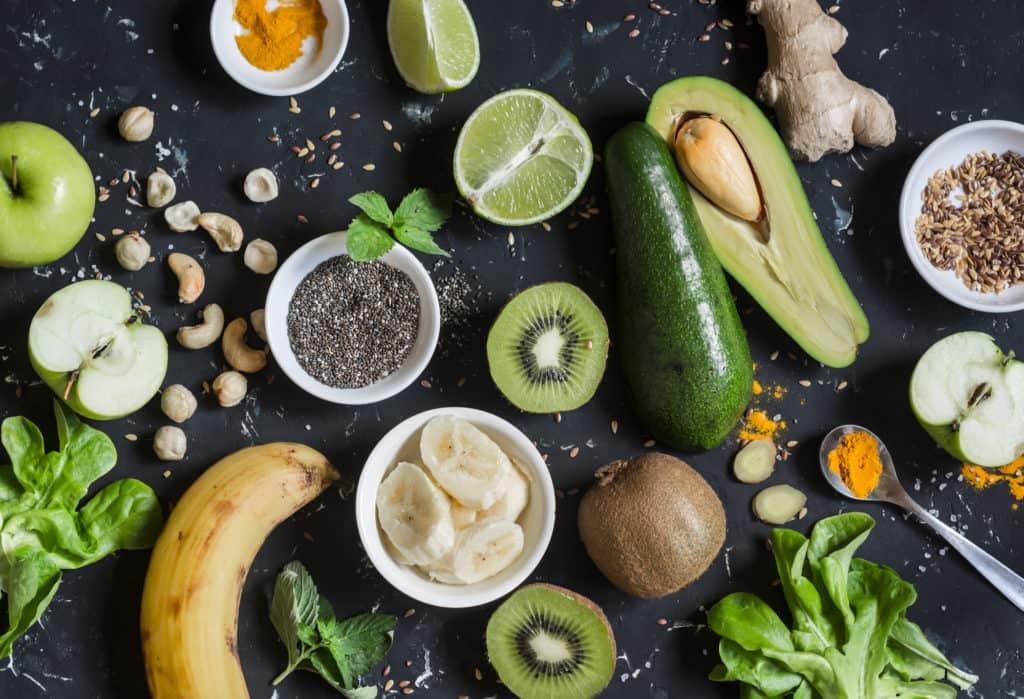
Support Your Body’s Natural Detox Capacities (And How They Help Your Bones!)
Your body has natural methods of removing and processing toxic compounds.
The liver prevents pathogens — viruses, bacteria, and microorganisms that can cause diseases — from entering your bloodstream and neutralizes environmental toxins. Your kidneys filter out waste other ways and secrete them through your urine. And your gut, if healthy, stops toxins from circulating.
We all come with these natural and effective detox methods already built into our bodies! So the best way to avoid and minimize these unhealthy toxins and compounds is to support these functions. The great news is, you’ll be benefiting your bones, too. The following program supports your bone health by reducing your exposure to toxins, which can affect your hormones, absorption of bone-building minerals and more. Each section will identify how you can support your overall health and bones – and give actionable recommendations to clean up your health.
Support Your Liver
The liver is an essential organ and plays a role in digestion, energy storage, metabolism, and hormone production… it’s also the major organ in your body that supports detoxification. There are two ways the liver helps you detox. Liver diseases are also associated with bone loss due to increased bone resorption or decreased bone formation, depending on the type of liver disease. In fact, up to 40% of patients with chronic liver disease may experience a fracture.
Phase 1 — Breakdown:
Every day we are exposed to chemicals and toxins in the water, food, and air we breathe. Fortunately, there are a group of enzymes that exist in Phase 1 of the liver detoxification process that protect us by converting these toxins into less harmful ones. These enzymes are known as the cytochrome P450 group and are responsible for breaking down drugs, chemicals, and endogenous substrates like caffeine and alcohol.
After Phase 1 has produced these less toxic byproducts, they move on to Phase 2 because at this point, they can still potentially pose a threat to the body. Phase 2 ensures these toxins don’t build up and neutralizes them so they can be removed.
Phase 2 — Neutralize:
This phase neutralizes the byproducts of Phase 1 and any additional remaining toxins. This is achieved by making toxins water-soluble so that they can be effectively excreted by your body, also known as conjugation. Glycine, sulphate, and glutathione are the primary molecules responsible for this process.
Glutathione has been dubbed the “master antioxidant” because it’s the most abundant antioxidant in the body and can regenerate itself in the liver!
While glutathione is found in avocados, asparagus, and spinach, it is not well absorbed into your body. Why? Researchers suggest a digestive enzyme called GGT (y-glutamyl transpeptidase) is responsible for this poor absorption rate because it breaks glutathione down before it can be absorbed by the body. Glutathione supplementation has also been controversial and lacks efficacy.
Instead, certain nutrients and foods — like vitamin C, vitamin E, selenium, and sulfur-rich foods like onions, garlic and cruciferous vegetables like cabbage, broccoli, and brussels sprouts — can provide glutathione building blocks and may increase glutathione production.
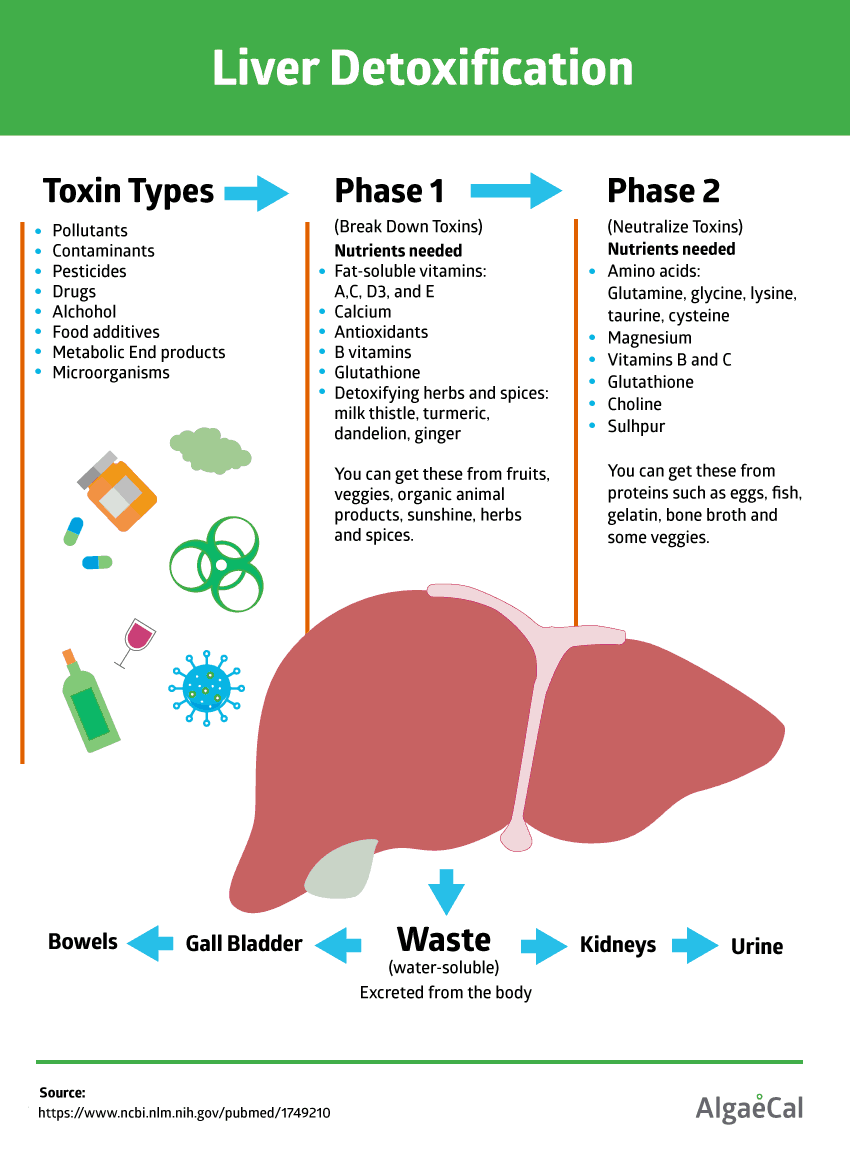
[embed_infographic title=”Liver Detoxification Pathways” alt=”Liver Detoxification Pathways Infographic” src=”algaecal.com/wp-content/uploads/LiverDetox.png”]
In addition, there are several ways in which you can further support your liver:
- Avoid refined sugars, processed foods, and excessive alcohol intake.
- Eat choline-rich foods: Egg yolks and liver are some of the highest food sources of choline, which helps the liver to function properly and process fats. When humans don’t eat enough choline from their diet, fatty liver (a condition where there is a buildup of fat in the liver) is one of the earliest health events. Remember to choose grass-fed sources whenever possible. The Institute of Medicine has set the recommended adequate intake for choline at 425 mg/day for women and 550 mg/day for men. There are currently no representative estimates of intake from choline from food or supplements at this time.
- Eat Sulfur-Rich Foods: Sulfur (SH) is an important part of the molecule glutathione. In fact, since the 1990s, it has been well-established that glutathione concentrations plummet in the liver and lungs when sulfur amino acids are inadequate in rat studies. This is why incorporating sulfur-rich foods like cruciferous vegetables, garlic and onions into your diet may help with glutathione activity.
- Eat Selenium Rich Foods: Brazil nuts are the top food source of selenium, followed by yellowfin tuna, halibut, and sardines. In fact, Brazil nuts are such a great source of selenium you do not need to eat more than 1 or 2 small nuts per day, more can be potentially toxic. Research has found that when blood levels of selenium are low we produce far less glutathione and show increased free radical damage. When selenium is provided, however, not only are these adverse effects reversed, but less of key compounds involved in bone building activity (type 1 collagen and alkaline phosphatase) increase – and so does the deposition of calcium into your bones!
- Eat Beets! They’re packed with betalains, which are a unique source of phytonutrients and have been specifically shown to support Phase 2 of the detoxification process. Not sure how to cook with beets? Check out our recipe at the end of this post!
- Eat Potassium-Rich Foods: Pair those beets with potassium-rich foods like sweet potatoes and winter squash to further support healthy liver function.
- Assist detoxification with turmeric, milk thistle, and dandelion root. Milk thistle has been used for thousands of years as a herbal remedy and is primarily taken to increase liver health. Studies have shown that milk thistle can protect the liver from toxic substances. It’s even been used traditionally as an antidote for mushroom poisoning as it’s said to counteract the toxic effect of the death cap mushroom if given within 10 minutes of digestion. While a number of animal studies demonstrate milk thistle can be helpful for liver protection, human study results are mixed. Turmeric curcumin has antioxidant, anti-inflammatory, antibacterial and anticancer properties and like Milk Thistle has been used for thousands of years for a variety of diseases, including liver conditions. Turmeric has been shown to support liver metabolism, however, there are still only a few studies that have been conducted on turmeric curcumin and liver diseases. Dandelion has long been used to aid the liver, gallbladder and bile ducts to function better. Today, it’s used as a natural diuretic, which has been used to help with minor digestive purposes. However, we still know little about dandelion’s health effects as there’s little scientific evidence on this particular herb.
Support Your Kidneys
The kidneys excrete the majority of the toxins you accumulate. They also regulate fluid and balance minerals such as calcium, magnesium, and potassium which are crucial for your bones.
Healthy kidneys also mean healthy bones. The kidneys convert vitamin D from foods and the sun into the active form of vitamin D that the body can use. If your kidneys are unable to do this, your body has a shorter supply of active vitamin D. Active vitamin D helps to manage calcium in your gut, blood, and bones, and helps cells in your body communicate. Without active vitamin D, it can cause calcium and other minerals to become imbalanced and negatively affect your health.
Is too much protein going to harm my kidneys?
While this topic has received considerable attention, high protein intake won’t damage healthy kidneys. However, if you have an existing kidney disease or poor kidney function, it is recommended to limit protein intake.
There are several ways to support your kidneys:
- Don’t smoke
- Hydrate, hydrate, hydrate
- Exercise regularly
- Limit heavy drinking
- Limit over-the-counter medications: Nonsteroidal anti-inflammatory drugs (a specific group of pain relievers), which can include naproxen, aspirin, and ibuprofen can damage your kidneys if taken daily or regularly.
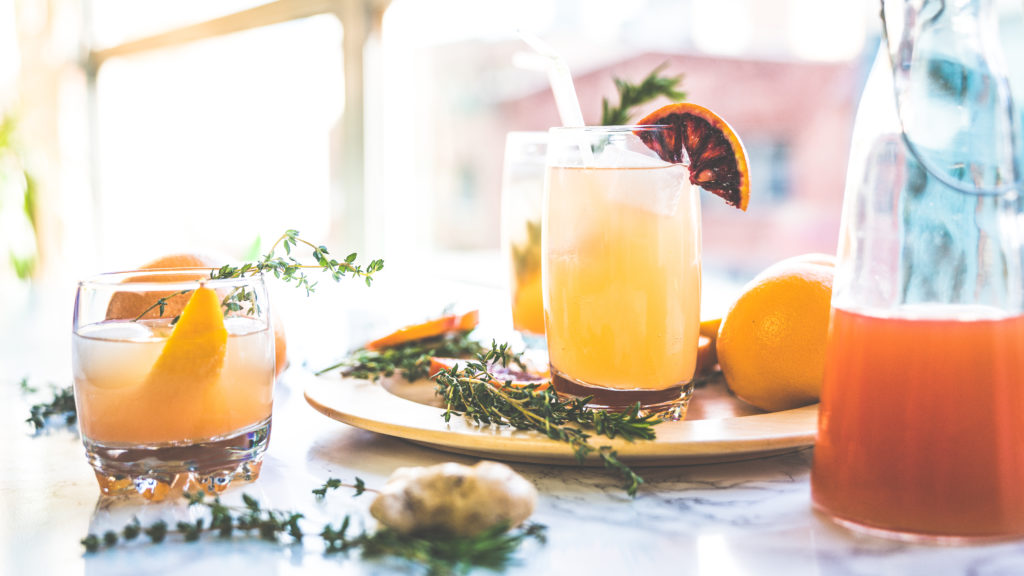
Support Your Gut
Poor digestion makes it harder for your body to absorb nutrients and can lead to bone loss. Meaning, one of the most important lifestyle changes you can make to prevent bone loss is to adopt habits that support a healthy gut.
Celiac and inflammatory bowel disease are gastrointestinal disorders that affect your body’s ability to absorb nutrients. While calcium, magnesium, and other bone-building nutrients may be consumed at adequate levels, the risk of bone density loss is still high because sufferers simply cannot absorb them properly.
If you suffer from poor digestion, you can combat this by avoiding pro-inflammatory foods and foods you are sensitive to. Also, consuming fermented and probiotic-rich foods have been shown to promote healthy gut bacteria and have bone benefits.
Some good gut foods to consider adding to your diet include:
- Natto
- Miso
- Sauerkraut
- Kombucha
- Yogurt
- Kimchi
- Pickles
- Olives
- Tempeh
Support Your Mind and Body
The lymphatic system is made up of vessels that carry fluids and nutrients throughout your body. It also delivers waste to the kidneys and colon where it can be expelled. During steady-state exercise, lymph flow has been shown to increase by 2-3x higher than at rest.
Yoga is a wonderful option as it helps to boost your body’s circulation, blood flow, lymphatic drainage, and aid in healthier, stronger bones. Though it may not “detoxify” you directly by affecting the biochemical or cellular workings of your liver, it’s still important to incorporate regular exercise for overall health.
Yoga is also a great way to support your mind through meditation, breathing, and intention setting. It’s not just about the physical body — stress and anxiety can also be thought of as a form of toxic compounds that can impact your mental health.
If you’d like more information about safe yoga poses for people with low bone density, check out our “Ultimate Guide to Yoga for Osteoporosis” blog post.
Disclaimer: If you have low bone density, osteoporosis or other health concerns, you may need to avoid or adjust exercises accordingly. If you are unsure, please check with a physician or doctor before attempting this or any exercise.
Eliminate Dietary and Environmental Toxins
Just as supporting your body’s organs can lead to healthier bones and a healthier you, eliminating dietary and environmental toxins can go a long way.
A poor diet can put stress on the liver and kidneys, making them work harder. This can cause a domino effect, leading to bone loss and osteoporosis by not providing your bones with the vitamins and minerals they need.
The following are dietary toxins you should look to avoid, limit, or swap for natural alternatives:
- Refined sugars
- Excess alcohol
- Cigarettes
- Minimize or limit the use of over the counter drugs and prescription medications
- Allergenic foods, such as gluten and dairy for some people
The non-profit Environmental Working Group reports the average woman uses 12 cosmetic products a day, with a total of 168 ingredients.
And the David Suzuki Foundation (DSF) conducted a study that revealed around 80% of participants’ cosmetics contained at least one of the 12 most toxic chemicals too.
Men aren’t immune either — they use personal care products daily with 85 ingredients!
Environmental toxins, which include beauty aids, cleaning supplies, and even some kinds of product packaging can also affect your bones and overall health. How? A lot of environmental toxins contain hormone disruptors, which can alter the bone remodeling process and skeletal formation. The three chemical categories we are going to focus on and you should avoid are fragrance (or parfum), phthalates, and parabens.
Fragrance (or Parfum)
As the name suggests, this is an ingredient with a scent to it. Products like perfumes, soaps, deodorants, and shampoos have fragrance in them. And these fragrances can be complex; the word “fragrance” on an ingredient label could be code for dozens of synthetic chemicals (not occurring in nature).
Some known side effects of fragrance exposure include:
- Allergic reactions
- Asthma attacks
- Migraines
- Irritated skin
- Cancer and neurotoxicity in some studies
Some products with fragrance are downright deceptive too. That’s because some products with “fragrance-free” or “unscented” labels are anything but. Yes, they may not have a scent, but they still contain fragrance that is simply masked with another chemical agent.
What’s more, companies selling products with fragrance are not required to include their exact chemical composition. So who knows what kind of toxic cocktail makes up “fragrance” in any one product!
It’s best to stay away from any product with fragrance in it. Yes, even “fragrance-free” products can still contain fragrance, but odds are far better with those than the alternative. Also, you can try natural products like essential oils that don’t contain fragrance, or natural deodorants and lotions. Just check the label!
To be totally sure of what you’re putting on your body, here are a few common brands that use essential oils — not fragrance — for their scent: Tom’s; Schmidt’s; Weleda; and Primal Paste.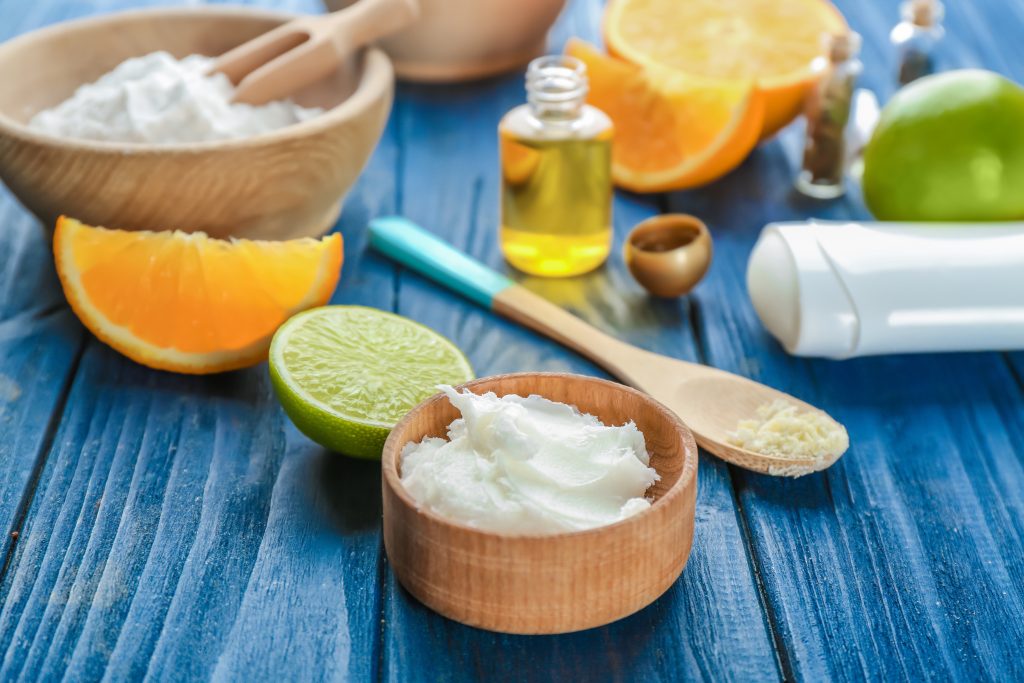
DIY Homemade Natural Deodorant
You can actually make your own deodorants too! Here’s what you’ll need:
- 2 tbsp coconut oil
- 2 tbsp baking soda
- 1 tbsp shea butter (optional)
- 1 tbsp arrowroot powder
- 10-15 drops of essential oils (for the desired scent); I recommend lemon, grapefruit, tea tree, or lavender for their antimicrobial and antibacterial action!
Directions: Ensure the coconut oil and shea butter aren’t hard; they must be room temperature. Combine all ingredients and mix them in a glass jar to seal. Your natural new deodorant will last around 6 months in the jar.
Have some fun with these and see what you can “stir up”!
Phthalates
The most important phthalate — dibutyl phthalate — is common in nail products like nail polish and plasticizers to keep the polish hard. Interestingly, phthalates can also double as “fragrance” toxins as mentioned above.
What’s the problem with dibutyl phthalate? Among other things, it is a:
- Known male reproductive inhibitor
- Toxin to unborn children in the womb
- Believed liver and kidney failure agent in young children
- Trigger for other chemicals to cause genetic mutations
All in all, another nasty toxin that can also disrupt your normal bone-building process. Like fragrances, it’s best to avoid products with any “phthalates” in them. The two biggies are dibutyl phthalate as mentioned above, and diethyl phthalate (DEP).
Parabens
Parabens are the most common preservative in cosmetic products. In fact, 75-90% of cosmetics have parabens in them.
Just like phthalates above, parabens can also be part of any “fragrance” ingredient listed on personal care and cleaning products too. Interestingly — and worryingly — parabens mimic the hormone estrogen. Some parabens naturally occur in food, and when they’re ingested, they are metabolized. But when cosmetic parabens contact the skin, they enter the bloodstream directly, are not metabolized, and can cause more damage this way.
What do parabens do to the body?
- Cause reproductive disorders
- Cause developmental disorders
- React with UVB rays to cause skin aging and DNA damage
So if you see anything “paraben” on a product’s ingredients list, it’s best to leave it on the shelf. Look out for several paraben forms, which include the following prefixes: Propyl-, Isopropyl-, Butyl-, and Isobutyl-.
Remember, all three of these chemical categories we’ve discussed today are hormone disruptors. And anything hormone-disrupting can negatively impact your regular bone remodeling process… which is the process that tears down old bone and builds up new bone.
So aside from avoiding these chemicals, and turning to natural products wherever possible, what else can you do to protect yourself?
Well, our bone health expert Lara Pizzorno recently found a helpful app to do just that. It’s called ThinkDirty. When you download ThinkDirty on your smartphone, you have a library of toxic revelations at your fingertips!
First, take out your phone and load ThinkDirty. Then, scan a personal care or cosmetic product barcode. The app will tell you what ingredients are inside! It can also tell you healthier alternatives to the scanned product. You can download ThinkDirty for your smartphone here.
The following are additional environmental toxins you should look to avoid, limit, or swap for natural alternatives:
- Cosmetics
- Household cleaners
- Perfumes
- Hair dye
- Shaving cream
- Plastics (Tupperware, water bottles)
Three Easy Detox Recipes
Eating well can be simple! So we want to end this post with three easy and delicious detox recipes for a healthier you this year.
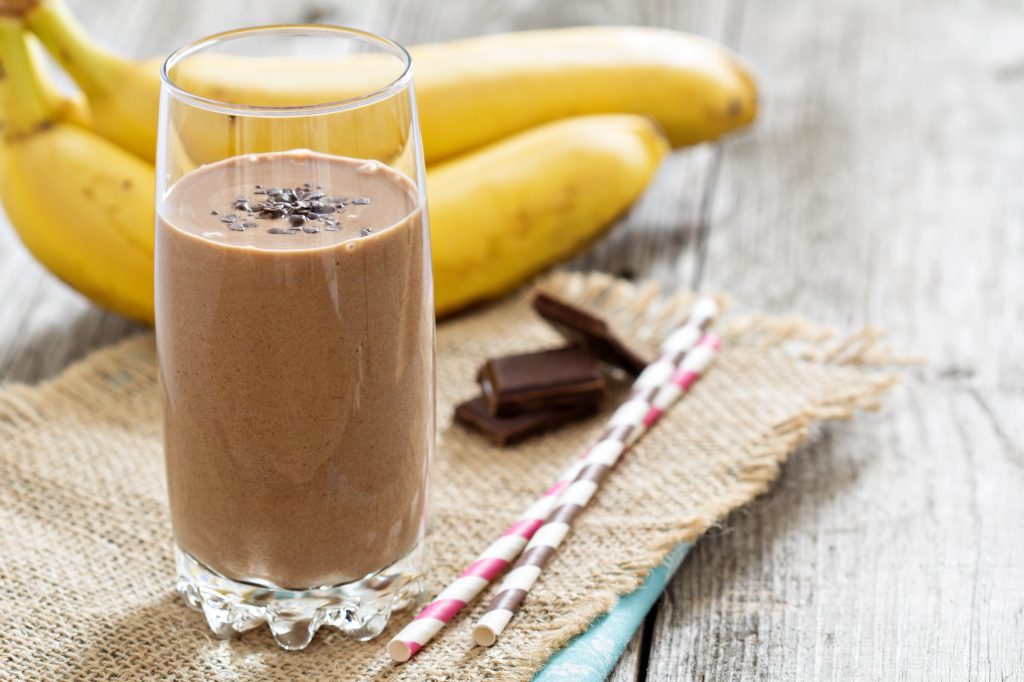
Cinnamon Coffee Smoothie
Coffee is no longer considered an unhealthy beverage with increasing research linking it with reduced risk for several diseases, including type 2 diabetes. The connection? Type 2 diabetes has long been associated with a number of liver disorders and now, recent research is showing that coffee may protect and even undo certain types of liver damage. As you know, your liver is required for a variety of functions and one of those is to metabolize and flush out toxins.
Further supporting its detoxification benefits, coffee has also been shown to increase plasma concentration of glutathione when consumed in moderation. Discover more benefits of coffee in our post: Is Coffee Bad For My Bones?
So if you’re a coffee drinker, keep enjoying that java while reaping the benefits. And try getting creative by adding it to your morning smoothie.
Makes 1 Serving
Ingredients:
- ½ cup cold brew coffee
- ¼ tsp. cinnamon powder
- ½ tbsp. cacao powder
- 1 small banana chopped and frozen
- ½ cup almond milk
- ½ cup fresh spinach
Directions: Add ingredients to a blender and blend until smooth!
Broccoli Spinach Soup
Cruciferous vegetables like cauliflower, broccoli sprouts, bok choy, brussels sprouts, and kale are high in a compound called sulforaphane. Sulforaphane activates an important antioxidant called quinone reductase. Quinone reductase protects your cells from toxins and carcinogenic compounds. In other words, it’s a disease-fighting compound, particularly studied for cancer prevention.
Quinone reductase also helps to carry out the activity of glutathione, the “Master Antioxidant” we talked about that is produced in the liver.
Broccoli sprouts are the top source and has up to 100x more sulforaphane than mature broccoli. They’re wonderful additions to sandwiches, wraps, salads, and even to top hummus.
Try our Broccoli Spinach Soup recipe which you can top with additional broccoli sprouts!
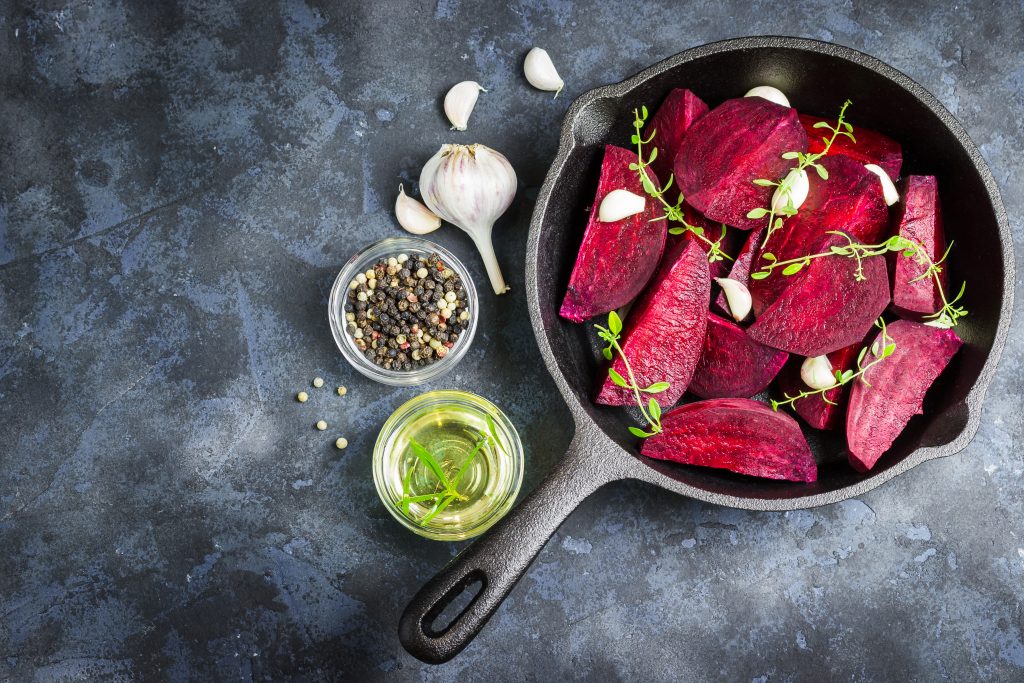
Coconut Oil Roasted Beets
Beets support detoxification because of their unique source of phytonutrients, called betalains. Betalains have been specifically shown to support our body’s neutralizing Phase 2 detoxification process.
Simply put, our cells attach on to toxic substances or drugs and make them less harmful. This makes the toxin or drug water-soluble so it can be excreted in our urine.
If you want to support your body as much as possible during a detox, beets should be a food staple!
Makes 4 servings
Ingredients:
- 4 medium-sized red beets
- 1 tablespoon coconut oil
- ½ tsp. Himalayan salt
Directions:
- Preheat oven to 400 degrees Fahrenheit (or 200 degrees Celcius)
- Wash and peel beets and cut them into wedges
- Spread beets out on a medium baking sheet over top aluminum foil
- Coat with coconut oil and salt evenly
- Roast for 30-40 minutes (flipping them halfway)
- Enjoy!
Takeaways
The detoxification process is natural, normal, and necessary. Our organs such as the liver, skin, lungs, and kidneys work to neutralize the toxins in your body every single day. But sometimes it can get overloaded with environmental toxins, unhealthy food, and lifestyle choices. That’s why sometimes your body can use a little help.
You can support these natural detoxification pathways by limiting proinflammatory foods like refined sugar, flour, and preservatives. And it’s not only foods you need to worry about, but your surroundings too. Your environment, pollution, household cleaners, makeup and other beauty products can all contribute to toxicity in the body.
However, being aware of these toxins and regularly avoiding and limiting them will not only help you feel healthier overall, they’ll be benefiting your bones, too!
Think of this as a lifestyle, rather than a detox plan. No crazy or radical cleanses needed – just a healthy regimen that supports your organs that naturally clean and support you!
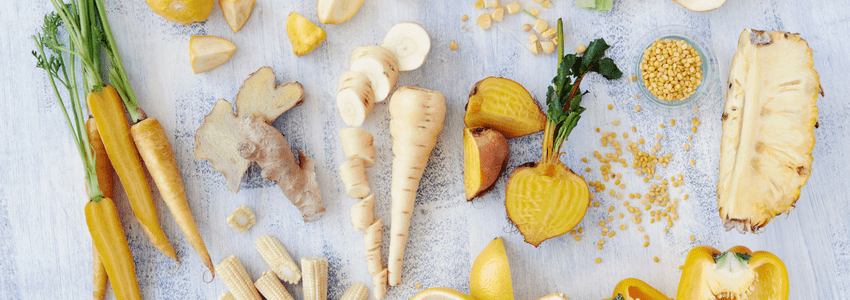




Georgiana
January 7, 2017 , 6:07 amThanks!